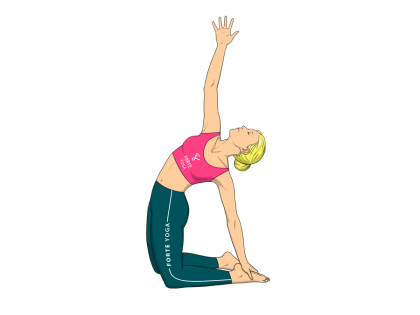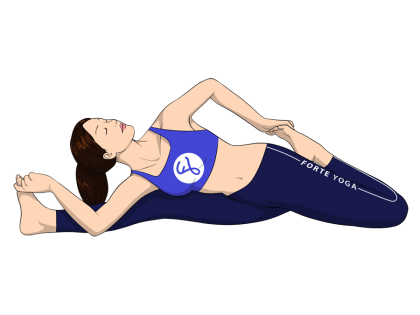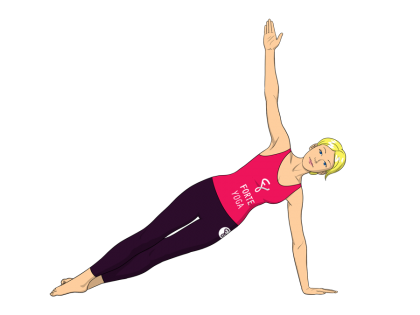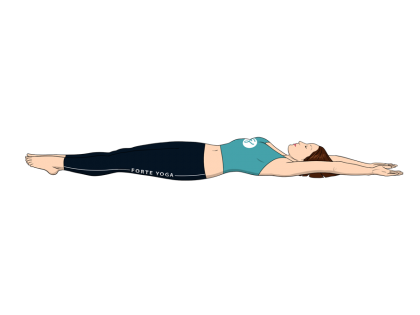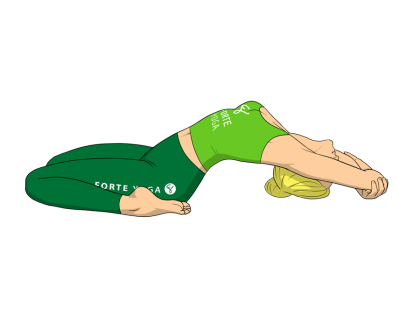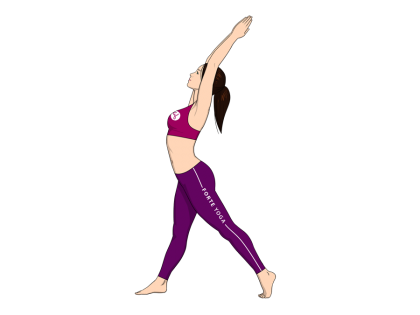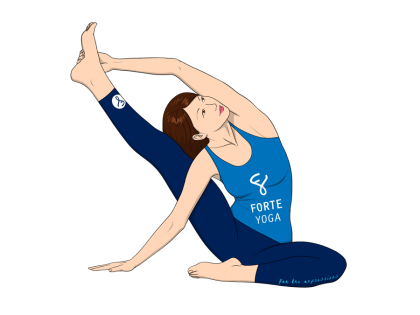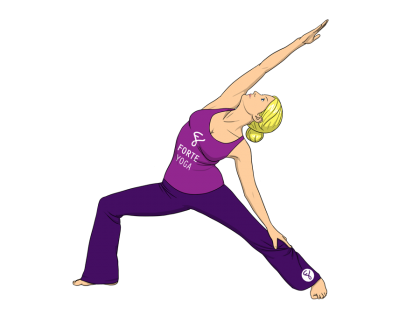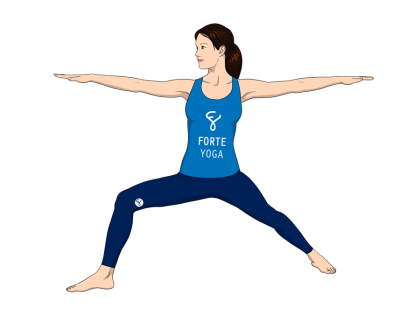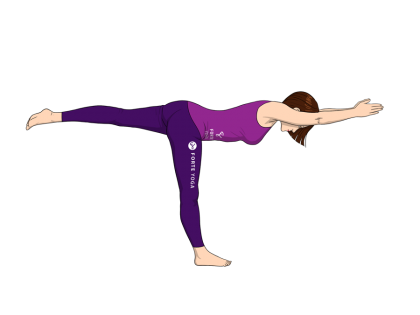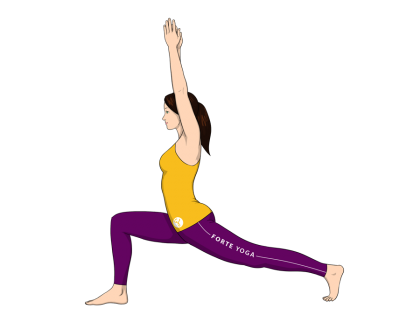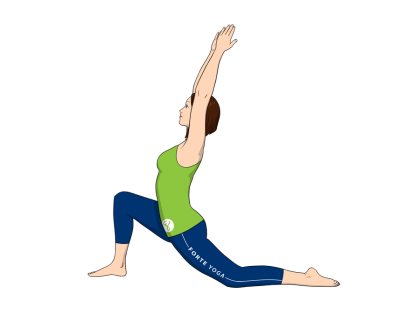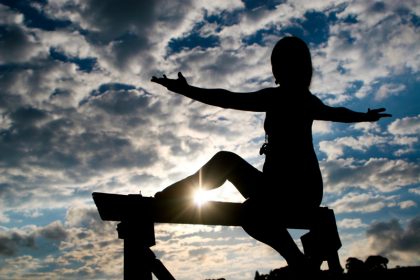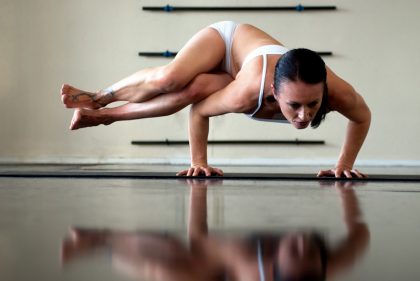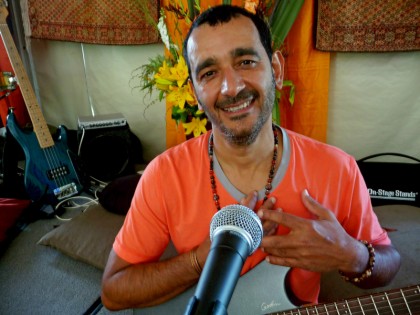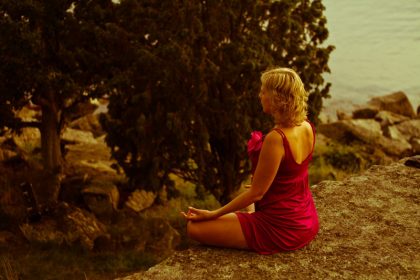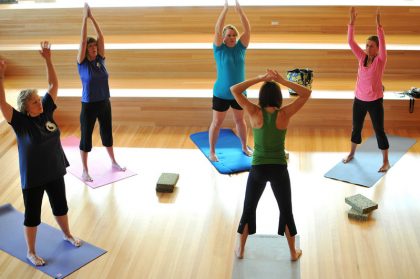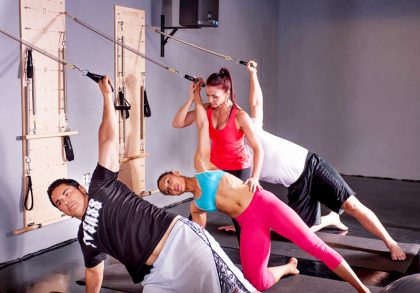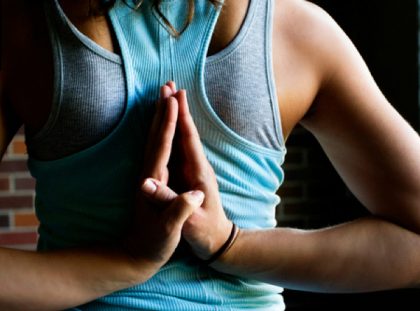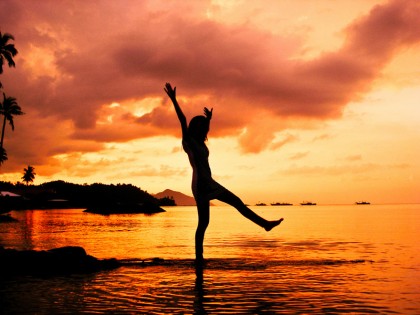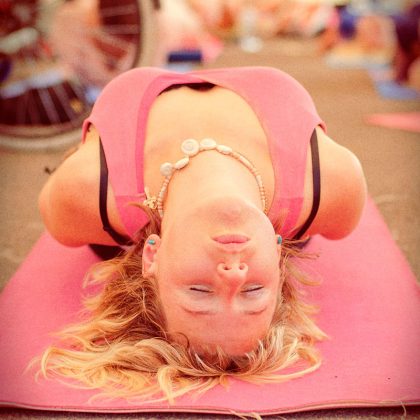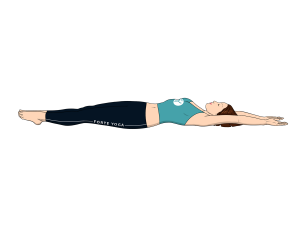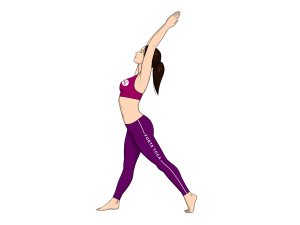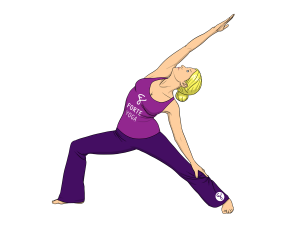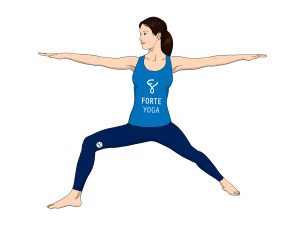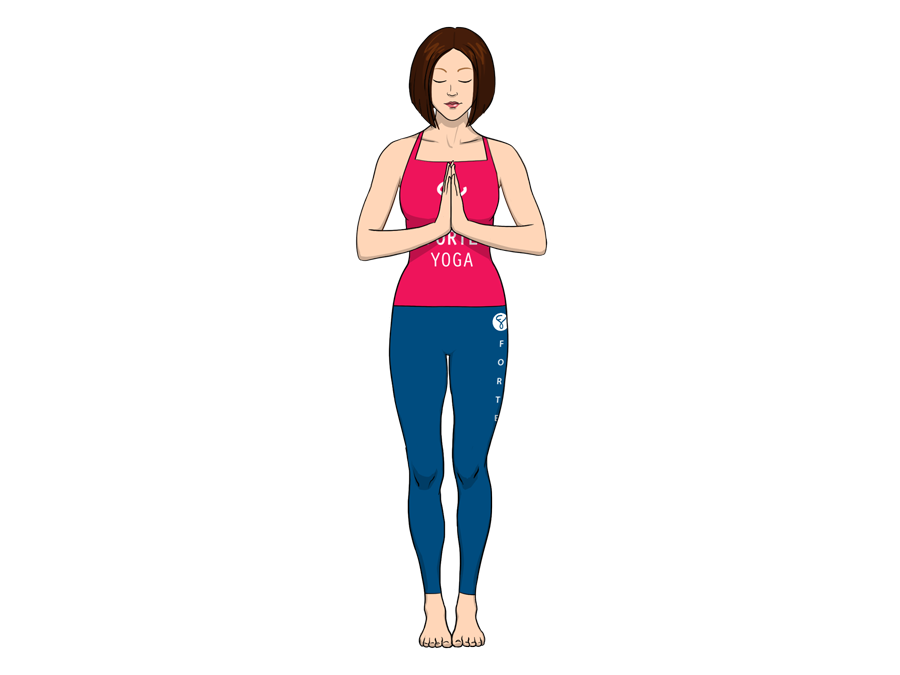
Mountain Yoga Pose is a standing pose that targets the quads and abs and is ideal for yogis and yoginis at a beginner level.
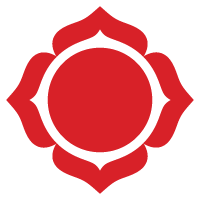 muladhara – the root chakra
muladhara – the root chakra manipura – the wisdom chakra
manipura – the wisdom chakra[yoga-sharrre]
- To start the position, you may begin with your feet together or apart. Though Tadasana, or Mountain Pose, is the most fundamental asana, there are several variations of this position. The most common variations have one difference: placement of the feet. Otherwise, all of the fundamentals are adhered to, so choose which is more suited to you. If you decide to keep your feet together, stand so that the insides of your big toes are touching, both facing straight forward. Keep your heels slightly apart, visualizing a straight line from your heels to your big toes. If you start with your feet apart, place them so they are directly beneath your hips. Same as when you’re feet are together, keep the feet facing forward so that heels and big toe are in line.
- From here, begin to position your lower body. You may want to move your legs around a little, bending the knees a bit before straightening them out. Lift your toes, wiggling and spreading them out across the floor, finding a nice sense of ground and stability. Evenly distribute your weight onto both feet; most people naturally favor one side over the other, so if it’s difficult to tell how evenly your weight is spread; try swaying side to side, transferring the weight back and forth, until gradually coming to a stop when you feel you strike an even balance.
- Move your tension to your thighs and hips without hardening your stomach, hips moved forward and away from the lower back. If you feel tension in your back or legs, try bending your knees slightly and pull in your tailbone before straightening the legs again. Your upper thighs should roll inward slightly. Internally lift your ankles, knees and pubic bone, visualizing a straight line running through the length of your body. Though stationary, keep your entire body active by pulling in and up at your navel and lifting your breastbone up toward the ceiling. Your head should be directly above the center of your pelvis.
- Stand with your arms neutral at your sides, broadening your shoulder blades and widening your collar bones. Keep your arms relaxed, comfortably hanging beside your torso. Begin relaxing and softening your face and neck as well; be sure your throat isn’t tight and that your tongue is flat and soft. Relax your gaze, directing it past the tip of your nose.
Stand in this position as long as you like, at least 30-60 seconds if being performed on its own, but is a great starting point for many asanas as well.
- Breathe deeply through each step.
- While there are a few variations of Tadasana, most of the key aspects are overarching. Keep your feet facing forward, stretched and firm on the floor, with the balls of your feet grounded. Keep your chest broad and your shoulders rolled back.
- If you feel that you have difficulty breathing, it may because you are tensing up your stomach too much. Keep your belly relaxed in this position, and your chest light.
- Standing for long periods of time, including in Tadasana, is not recommended for people that suffer from frequent headaches, insomnia or low blood pressure.
To vary the pose, gently stretch the arms, back and deltoids (shoulders) by engaging the arms. Instead of keeping arms neutral at your sides, inhale and lift both arms up simultaneously until the meet above the head. Keep your arms as straight as possible, but bow the elbows out to the sides slightly to avoiding crowding the ears and neck. Keep your shoulders firm against the back; do not lift them into the neck. Clasp your hands together, keeping both index fingers pointing upward. Hold this position for 30-60 seconds, then release the arms back to the sides simultaneously.
Feet together is considered the most traditional way of performing Mountain Pose, but feet apart is generally used in Vinyasa yoga. Having the feet together can help create a better visualization of a straight line running up your body, but having the feet apart creates a stronger, more stable base. For this pose, you’re encouraged to pick the position most comfortable to you.
You can make the Mountain Pose a practice in your everyday life! Next time you have to stand for a period of time, such as standing in line at the grocery store, DMV or if you work on your feet, try performing Mountain Pose and feel the difference it can make.
All Muscles: Foot muscles, quads, abs, diaphragm
Target Muscles: Quads, abs
- May help relieve sciatica and reduce flat feet.
- Improves posture.

